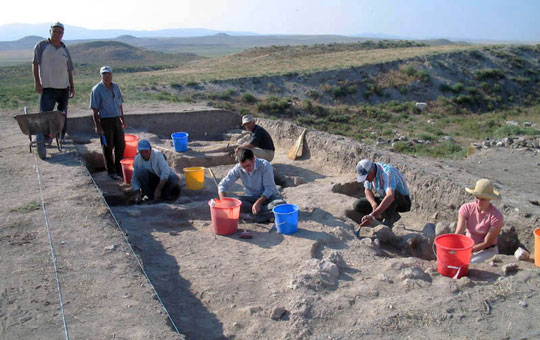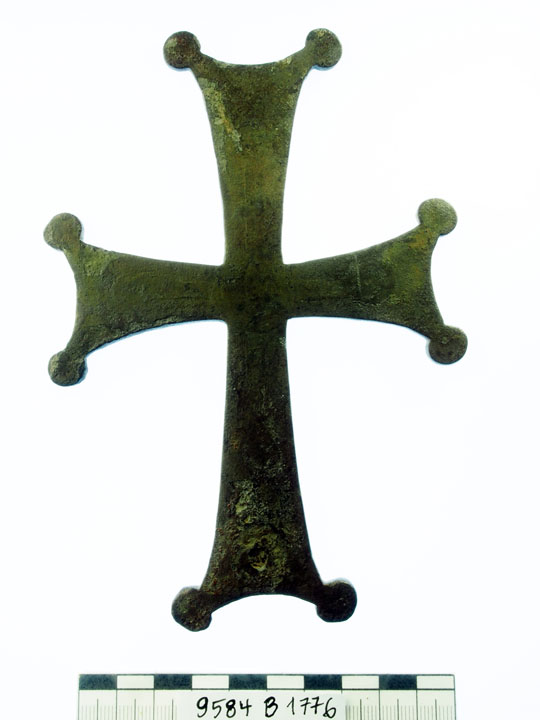Medieval Gordion

The Medieval period at Gordion technically extends from the Early Byzantine period (6th century CE) into the Turkish Selcuk and Early Ottoman periods.

Byzantine
At its height, the Byzantine empire—the medieval eastern continuation of the Roman state—controlled not only its core territory of Asia Minor and the southern Balkans but also the Mediterranean littoral, Italy, and the northern Balkans. Between the seventh and tenth centuries CE the empire was divided into military administrative districts called “themes” (themata). The site of Gordion lay in a boundary zone between two of these, the “Boukellarion” thema (governed from Ankara) and the larger “Anatolikon” thema to the south of it.
Excavations on the Citadel Mound have suggested a settlement hiatus for several centuries, throughout much of the Byzantine period. Nevertheless, the northwestern part of the mound had been a Christian cemetery in the late Roman period, and it is unlikely that subsequent civic and domestic buildings of Byzantine date would have been built on top of it. There may have been Byzantine occupation elsewhere on the mound, in some of the many unexcavated areas.
Turkish
Although the Byzantine state survived until 1453, it progressively lost much of its territory in Asia Minor to invading Muslim Turkish forces from the late 11th century CE onward. Between 1077 and the later 13th century, central Asia Minor was dominated by the powerful Turkish Selcuk Sultanate with its capital at Konya, although this was weakened when much of Anatolia came to be controlled by the invading Mongols. The Sultanate subsequently became a vassal of the Mongol Ilkhanid dynasty, ceasing to exist by the early 14th century. As a result of these disruptions, a number of Turkish principalities, or Ghazi emirates, emerged as centers of power.
The site of Gordion lay in the border zone between two of the most powerful of these: the emirate of Germiyan (with its capital at Kütahya to the west), and the emirate of Karaman (with its capital at Karaman in south-central Anatolia). Another emergent power in northwestern Anatolia was the Osmanlı or Ottoman emirate (the dynasty of Osman). By the mid-15th century CE, the Ottomans had conquered central and western Asia Minor as well as much of the Balkans to form the Ottoman Empire.
Excavations at Gordion have yielded evidence datable by pottery and coins to the 11th–14th centuries CE, but the limited ceramic sample has allowed only limited chronological precision. Settlement remains extend over much of the Citadel Mound. In the northwestern sector of the mound, above the late Roman cemetery, was a substantial building, many subterranean tandor-style ovens, and a large furnace or kiln. One of several pits contained a 13th century Iranian faience lion’s head. Further east on the mound, less well-preserved architectural remains were discovered. A fortification or enclosure wall with concrete mortar and large external buttresses suggest that the site of Gordion was still an important place worthy of protection in this period. The Medieval Turkish name for the settlement is unknown.
Further reading
- Sams, G. K.-M. M. Voigt “Gordion 1995” XVIII(1). Kazi Sonuçlari Toplantisi (Ankara 1997) 475-497.

